
软件工程专业英语(第2版)9787115623997
正版图书,可开发票,请放心购买。
¥ 46.77 7.8折 ¥ 59.8 全新
库存4件
广东广州
认证卖家担保交易快速发货售后保障
作者宋晓涛 谢红薇 郭晓红
出版社人民邮电
ISBN9787115623997
出版时间2024-03
装帧其他
开本其他
定价59.8元
货号31985192
上书时间2024-07-28
- 店主推荐
- 最新上架
商品详情
- 品相描述:全新
- 商品描述
-
作者简介
宋晓涛,硕士,讲师,2006年6月毕业于山西大学计算机系,主要从事智能软件工程等方向的研究。作为课程负责人,主讲“软件工程专业英语”课程多年。曾担任副主编,组织《计算机专业英语》(机械工业出版社,2008年)教材编写和样章的编写,参加《数据库原理及应用SQLServer2019》(清华大学出版社,2021年)等多部教材的编写。
目录
目 录
PART I Foundations 7
Chapter 1 8
Software Engineering 8
Competencies 8
1.1 Software Engineering 9
1.1.1 An Overview of Software Engineering 9
1.1.2 Software Process Model 11
1.1.3 Phases of Software Development 14
1.1.4 Methodology of Software Development 16
1.2 Software Requirements 17
1.2.1 What are Software Requirements 17
1.2.2 Categories of Software Requirements 18
1.2.3 Requirements Engineering process (RE) 19
1.2.4 Software Requirement Specification (SRS) 20
1.3 Designing the System 21
1.3.1 The Goals of Designing Phase 21
1.3.2 The Design Process 22
1.3.3 Software Designing Concepts 22
1.3.4 Developing a Design Model 25
1.4 Testing the System 25
1.4.1 Software Testing Fundamentals 26
1.4.2 Different Levels of Testing 27
1.4.3 Types of Testing Technique 29
1.5 Software Reengineering 30
1.5.1 Origin of Reengineering 31
1.5.2 A Software Reengineering Model 32
1.5.3 Software Reengineering Activities 33
Concepts 36
Terms 37
Reading 1 Cloud-Based Software Crowdsourcing 40
Reading 2 Test Driven Development 42
Reading 3 AiXcoder 44
Multiple Choice 45
True/False Questions 47
Fill in the Blanks 47
References 48
Chapter 2 49
Mobile Computers 49
Competencies 49
2.1 An Overview of Mobile Computers 50
2.1.1 Types of Mobile Computers 50
2.1.2 Features of Mobile Computers 52
2.1.3 CPU Architectures of Mobile Computers 53
2.1.4 Mobile Operating Systems 54
2.1.5 Mobile Apps 57
2.2 Smartphones 57
2.2.1 Functions 58
2.2.2 iPhone 60
2.3 Android Operating System 65
2.3.1 The Origin of Android 66
2.3.2 Android User Interface 67
2.3.3 Android Architecture 68
Concepts 70
Terms 70
Reading 1 Future Developments for Smartphones 73
Reading 2 Smartphones and Poor Sight 74
Reading 3 Android Software Development Tools 74
Multiple Choice 76
True/False Questions 78
Fill in the Blanks 78
Reference 79
Chapter 3 80
Data Management and Databases 80
Competencies 80
3.1 An Overview of Database Systems 81
3.1.1 The Fundamental Concepts of Database 81
3.1.2 Evolution of Database Technology 83
3.1.3 Advantages of Database Management Systems (DBMSs) 84
3.1.4 Data Models 85
3.1.5 Entity-Relationship Model 86
3.1.6 Levels of Abstraction in a DBMS 87
3.2 Relational Databases 89
3.2.1 Overview of relational database 89
3.2.2 Integrity Constraints over Relation 90
3.2.3 Relational algebra 91
3.3 Database Design 93
3.3.1 Requirements Analysis 94
3.3.2 Conceptual Database Design 94
3.3.3 Logical Database Design 94
3.3.4 Schema Refinement 95
3.3.5 Physical Database Design 95
3.3.6 Application and Security Design 95
3.4 Main Memory Databases 96
3.4.1 An Overview of Main Memory Database 97
3.4.2 The Evolution of Main Memory Database 98
3.4.3 The Key Technology of Main Memory Databases 99
Concepts 102
Terms 103
Reading 1 KingbaseES 106
Reading 2 MongoDB 108
Multiple Choice 111
True/False Questions 113
Fill in the Blanks 114
References 115
Chapter 4 116
Networking and Security 116
Competencies 116
4.1 LAN 116
4.1.1 Ethernet LAN 117
4.1.2 Packets—Data Transmission 118
4.1.3 Ethernet—Sending One Packet 118
4.1.4 Wi-Fi 119
4.1.5 A Summary of Ethernet Design 119
4.2 TCP/IP 120
4.2.1 IP Address 120
4.2.2 Domain Names 121
4.2.3 Router 121
4.2.4 What does it Mean to be on the Internet 121
4.2.5 Ping 122
4.2.6 Traceroute 122
4.3 Security 123
4.3.1 Computer—A Castle 123
4.3.2 Password Attacks 123
4.3.3 Phishing Attacks 125
4.3.4 Malware Attacks 126
4.3.5 Safety Recap 128
Concepts 128
Terms 129
Reading 1 Networking 130
Reading 2 TCP/IP 132
Multiple Choice 134
True/False Questions 137
Fill in the Blanks 137
Reference 138
Part II New Technologies 139
Chapter 5 140
Deep Learning 140
Competencies 140
5.1 Evolution of neural network 140
5.1.1 Deep Learning and Neural Network 141
5.1.2 The first wave of neural network research 142
5.1.3 The second wave of neural network research 142
5.1.4 The third wave of neural network research 143
5.2 Structure of Deep Neural Network 144
5.2.1 Hierarchical structure 145
5.2.2 Neurons 145
5.2.3 Computing 145
5.3 Categories of Deep Neural Network 145
5.3.1 Feedforward Neural Network (FNN) 146
5.3.2 Convolutional neural network (CNN) 146
5.3.3 Recursive neural network (RNN) 147
5.4 Applications of Deep Learning 148
5.4.1 Automatic speech recognition 148
5.4.2 Computer vision 149
5.4.3 Natural language processing 150
Concepts 151
Terms 151
Reading 1 iFlytek: The voice of AI 153
Reading 2 Deep Learning Transforming the Retail Industry 156
Reading 3 Providing Better Customer Service Strategy 157
Multiple Choice 158
True/False Questions 160
Fill in the Blanks 161
Reference 162
Chapter 6 163
Big Data 163
Competencies 163
6.1 Big Data Basics 164
6.1.1 Big Data and its Properties 164
6.1.2 Categories of Big Data 166
6.1.3 Big Value of Big Data 167
6.1.4 Jim Gray’s Fourth Paradigm 169
6.1.5 Evolution of Data Management 170
6.1.6 Big Data Challenges 172
6.2 Big Data Technologies 173
6.2.1 Big Data Acquisition and Pre-processing 173
6.2.2 Big Data Management 175
6.2.3 Big Data Analysis 177
6.2.4 Big Data Visualization 177
6.3 Big Data Systems 178
6.3.1 Batch Data Processing System 178
6.3.2 Streaming Data Processing System 179
6.3.3 Graph Data Processing System 180
Concepts 182
Terms 182
Reading 1 How Hadoop can be Used 186
Reading 2 A Multi-stage Filtering Strategy for Audio Retrieval 187
Reading 3 Transwarp Manager : Domestic big data management system 188
Multiple Choice 190
True/False Questions 193
Fill in the Blanks 195
Reference 196
Chapter 7 198
Blockchain 198
Competencies 198
7.1 Concept and Development of Blockchain 199
7.1.1 The origin of the Blockchain 199
7.1.2 Blockchain and the modern industrial field 200
7.2 The Core of Blockchain 202
7.2.1 The consensus mechanism 202
7.2.2 Blockchain and Cryptography 204
7.3 Blockchain Applications 206
7.3.1 Blockchain and Energy Internet 206
7.3.2 Blockchain and Internet of Things 207
Concepts 209
Terms 209
Reading 1 Bitcoin and Ethereum 212
Reading 2 Blockchain and Peer-to-Peer Energy Trading 213
Reading 3 The Energy Blockchain In China 215
Multiple Choice 217
True/False Questions 219
Fill in the Blanks 220
References 220
Chapter 8 222
Artificial Intelligence 222
Competencies 222
8.1 History 223
8.1.1 Precursors 223
8.1.2 The Birth of Artificial Intelligence 224
8.1.3 AI’s Golden Years and Its Boom 224
8.2 Research Goals 226
8.2.1 The Short-term Goal 226
8.2.2 The Long-term Goals 226
8.3 Major Researches on AI 227
8.3.1 Deduction, Reasoning and Problem Solving 227
8.3.2 Knowledge Representation 228
8.3.3 Automated Planning and Scheduling 228
8.3.4 Machine Learning 229
8.3.5 Natural Language Processing 229
8.3.6 Robotics 229
5.3.7 AI Game 230
8.4 Applications of AI 231
8.4.1 Apple Watch/Siri 231
8.4.2 Google Atlas5 232
8.4.3 ABB’s YuMi 233
8.4.4 Leonardo’s Robot 234
Concepts 235
Terms 235
Reading 1 Virtual Reality 237
Reading 2 Knowledge-Based (Expert) System 238
Reading 3 Artificial Intelligence in China 239
Multiple Choice 239
True/False Questions 241
Fill in the Blanks 242
References 243
Chapter 9 244
Internet of Things 244
Competencies 244
9.1 Definition of Internet of Things 245
9.1.1 Origin of the Concept of “Internet of Things” 245
9.1.2 Common Definition of Internet of Things 245
9.1.3 Development of the Internet of Things 246
9.2 Technologies of Internet of Things 249
9.2.1 Wireless Sensor Network 249
9.2.2 Embedded System 252
9.2.3 RFID 256
9.2.4 Other Technologies 259
9.3 Applications of Internet of Things 261
9.3.1 Food 261
9.3.2 Health 261
9.3.3 Intelligent Home 263
Concepts 265
Terms 265
Reading 1 Classification of the Internet of Things 268
Reading 2 The Architecture of the Internet of Things 270
Reading 3 The Internet of Things in China 271
Multiple Choice 272
True/False Questions 274
Fill in the Blanks 275
References 276
内容摘要
本书以计算机技术发展的新热点为主要内容,介绍了移动计算机、软件工程及其再工程、主存数据库、网络与安全、人工智能、大数据、移动互联网、物联网等知识。本书力求使读者在学习计算机专业英语的同时也能学到计算机发展的前沿知识,使读者的英语水平和专业知识水平共同得到提高,为今后的计算机职业生涯打下良好的基础。
本书既注重计算机基本概念的英文表述,又深入细致地讲解了计算机发展的新动向和新知识。每章内容循序渐进、难易适度,适合计算机与软件工程等相关专业的学生使用。
— 没有更多了 —


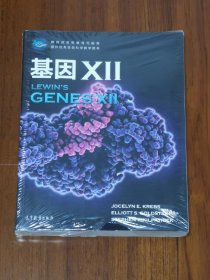
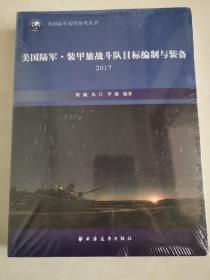
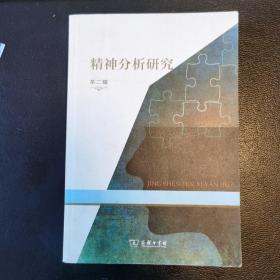




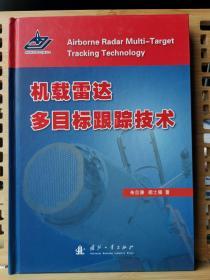
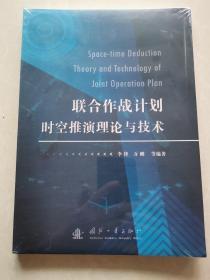










以下为对购买帮助不大的评价